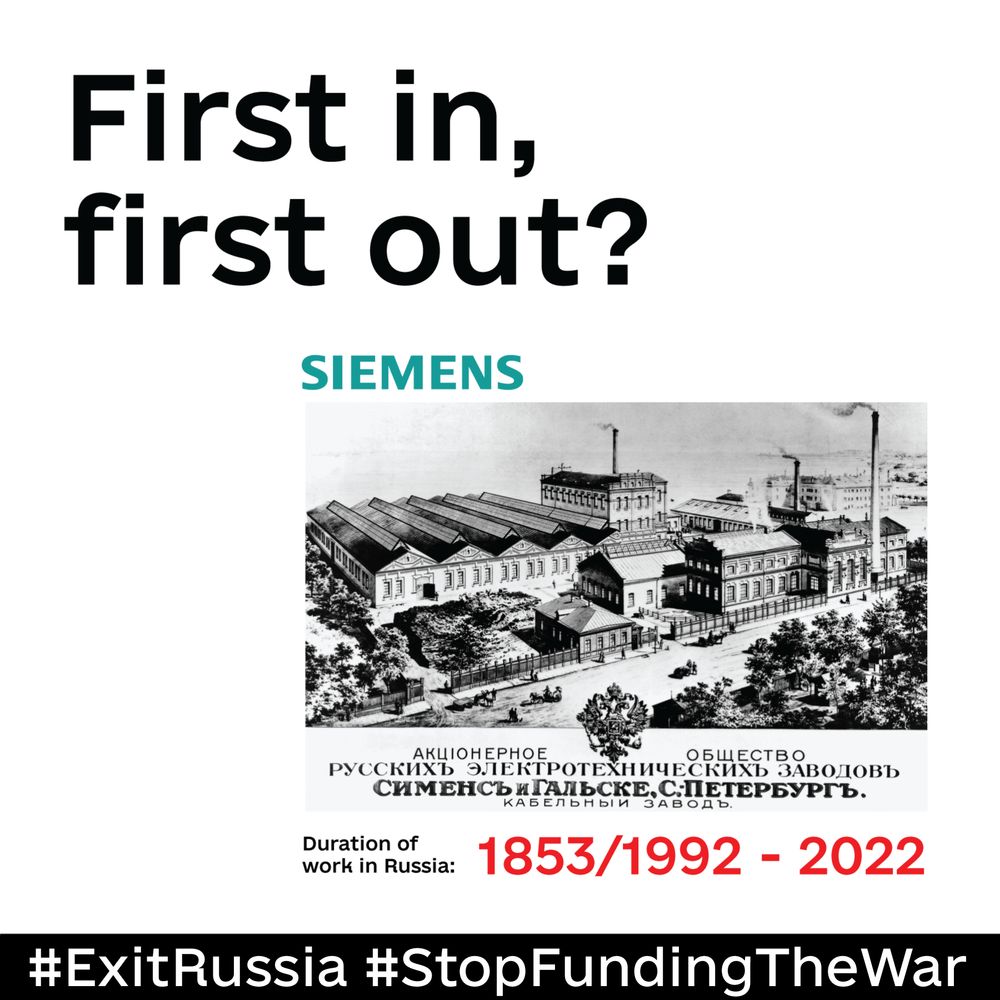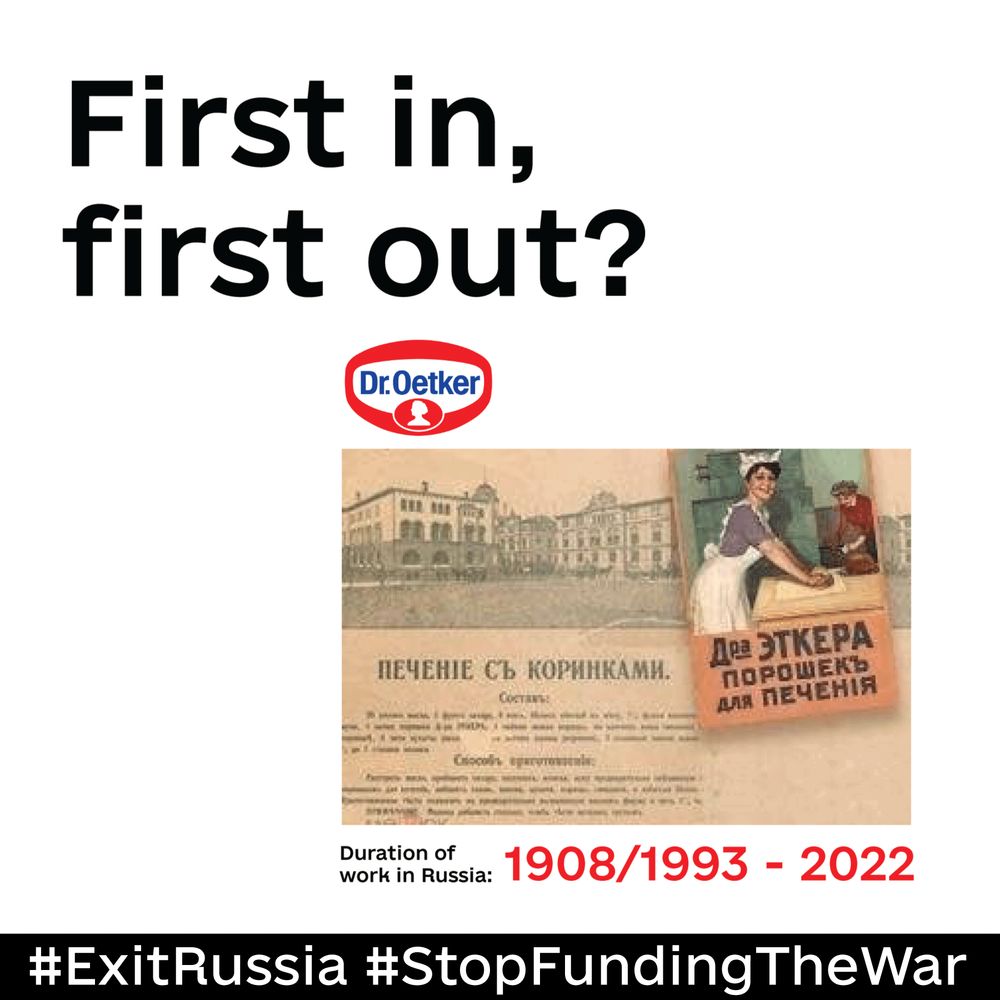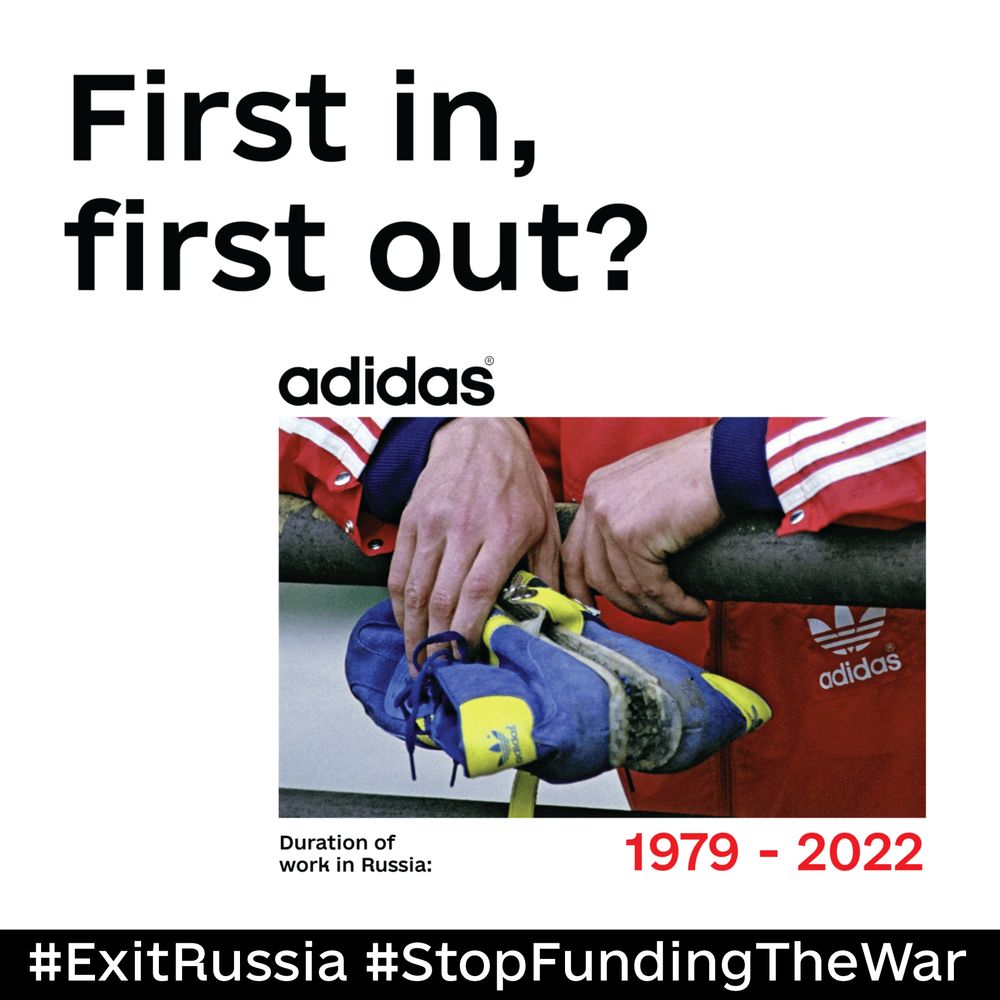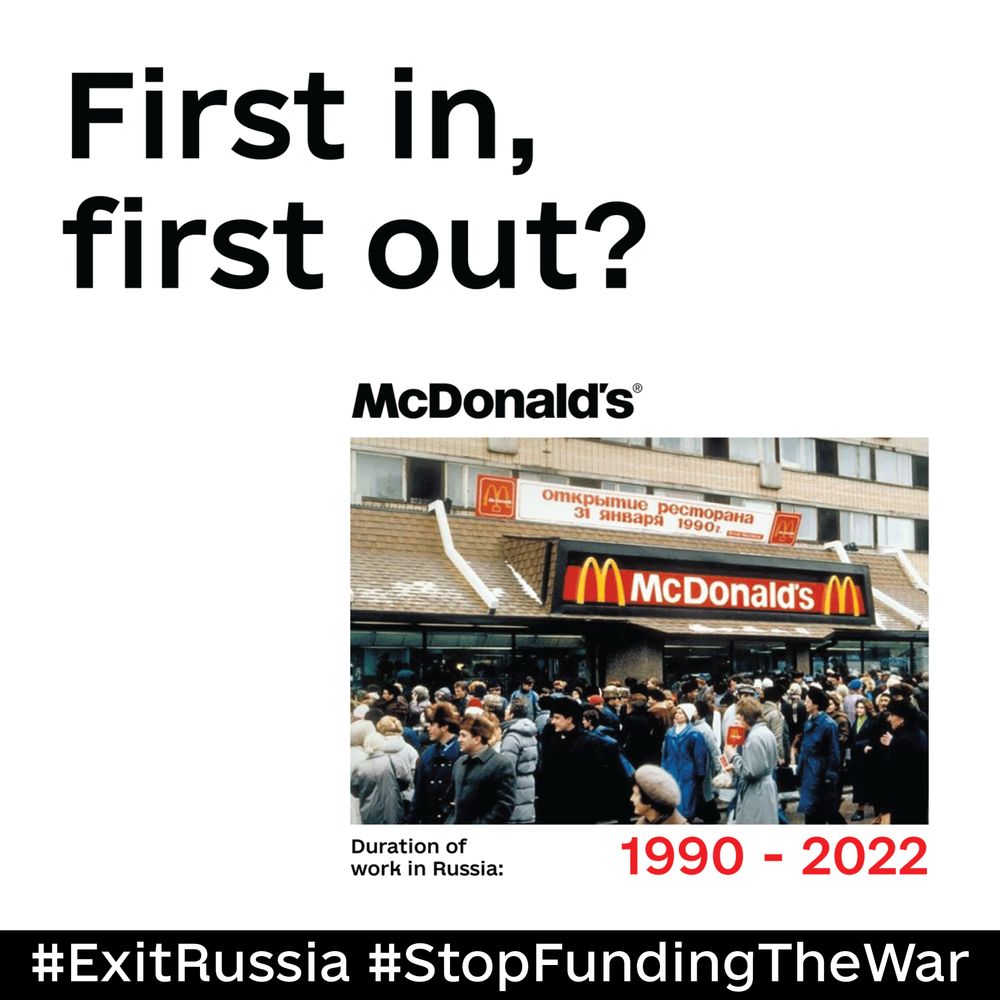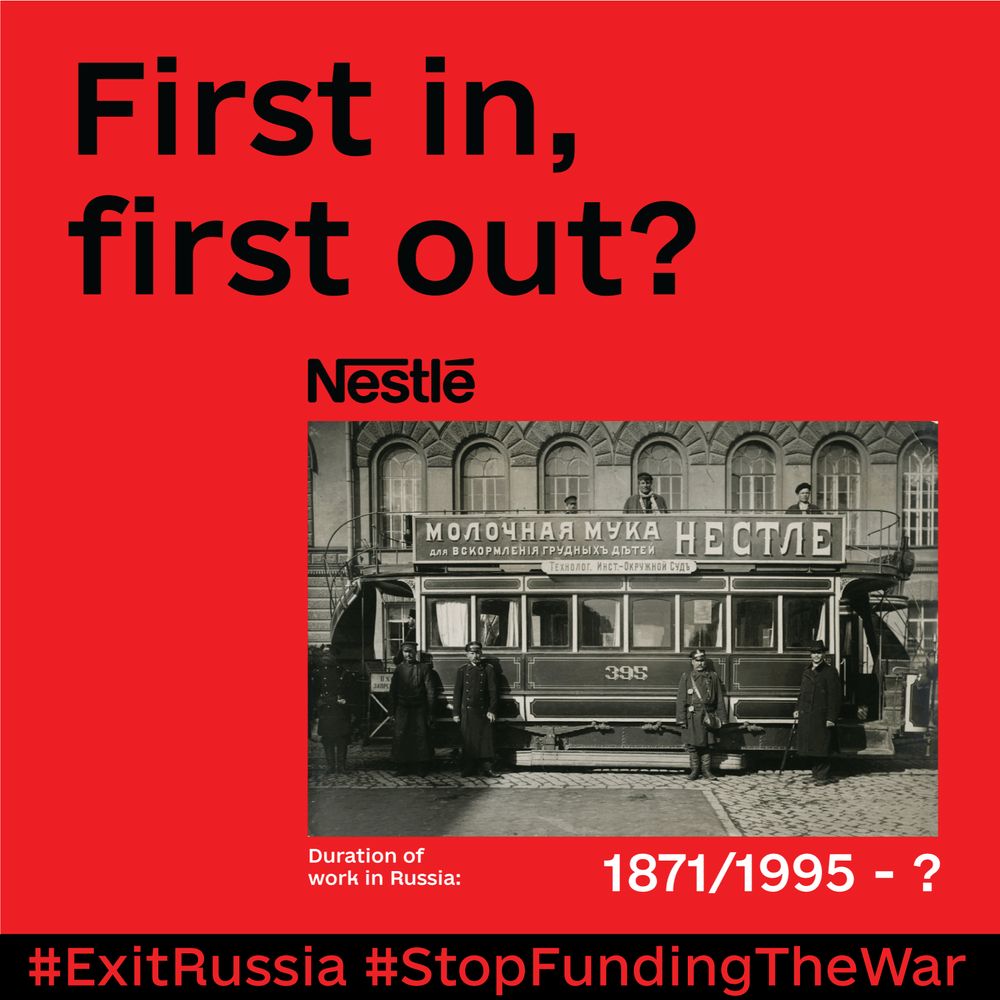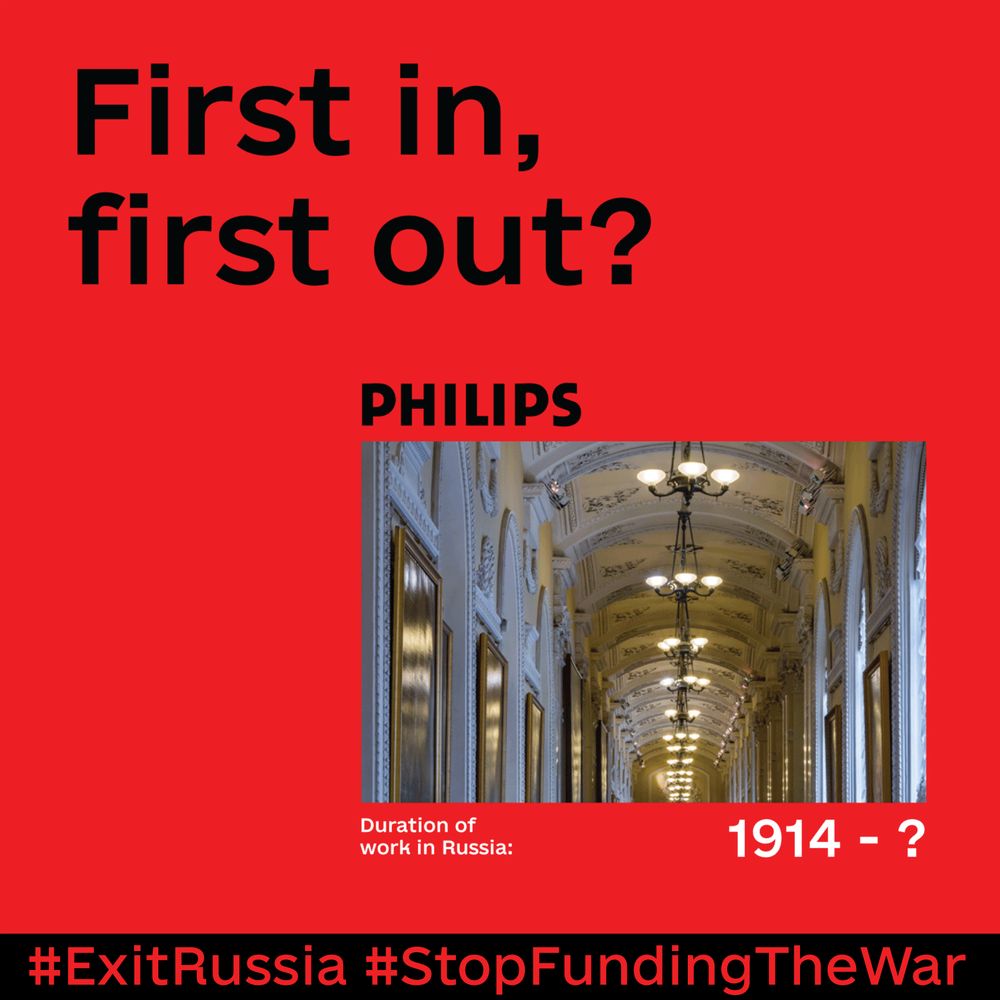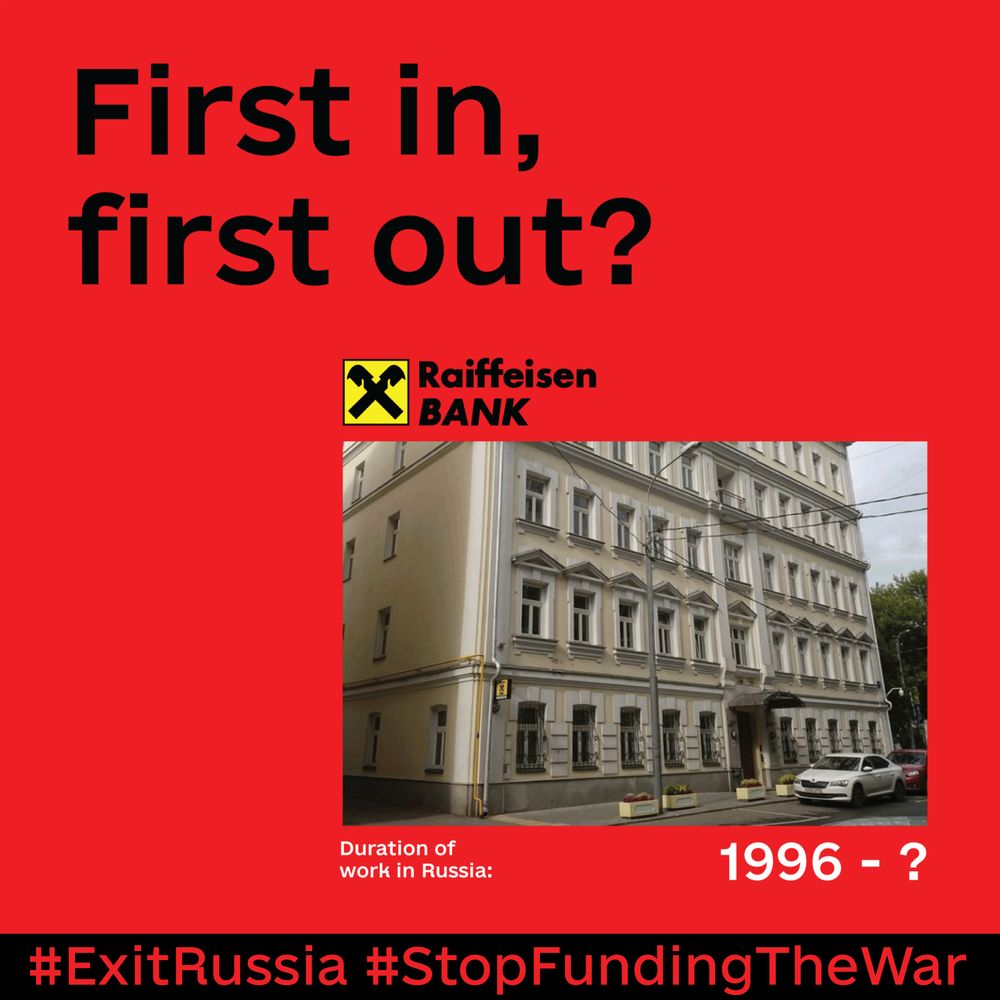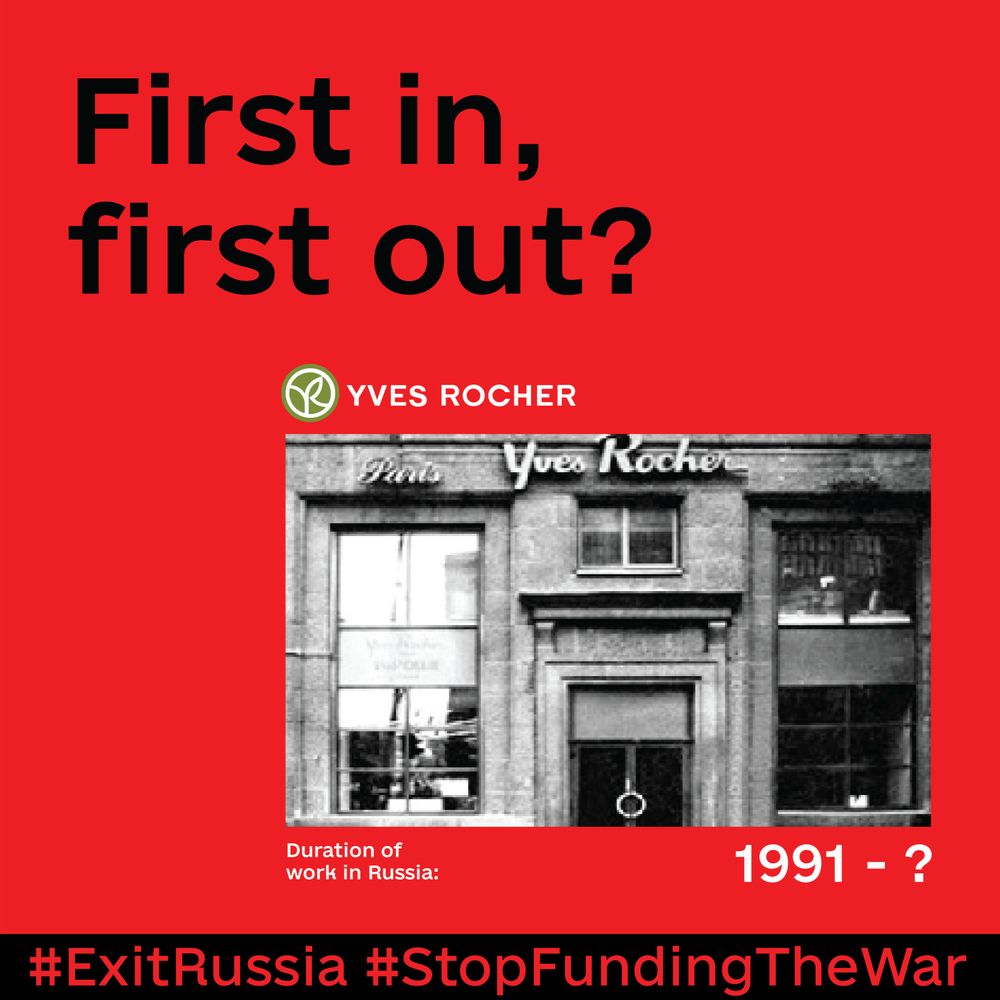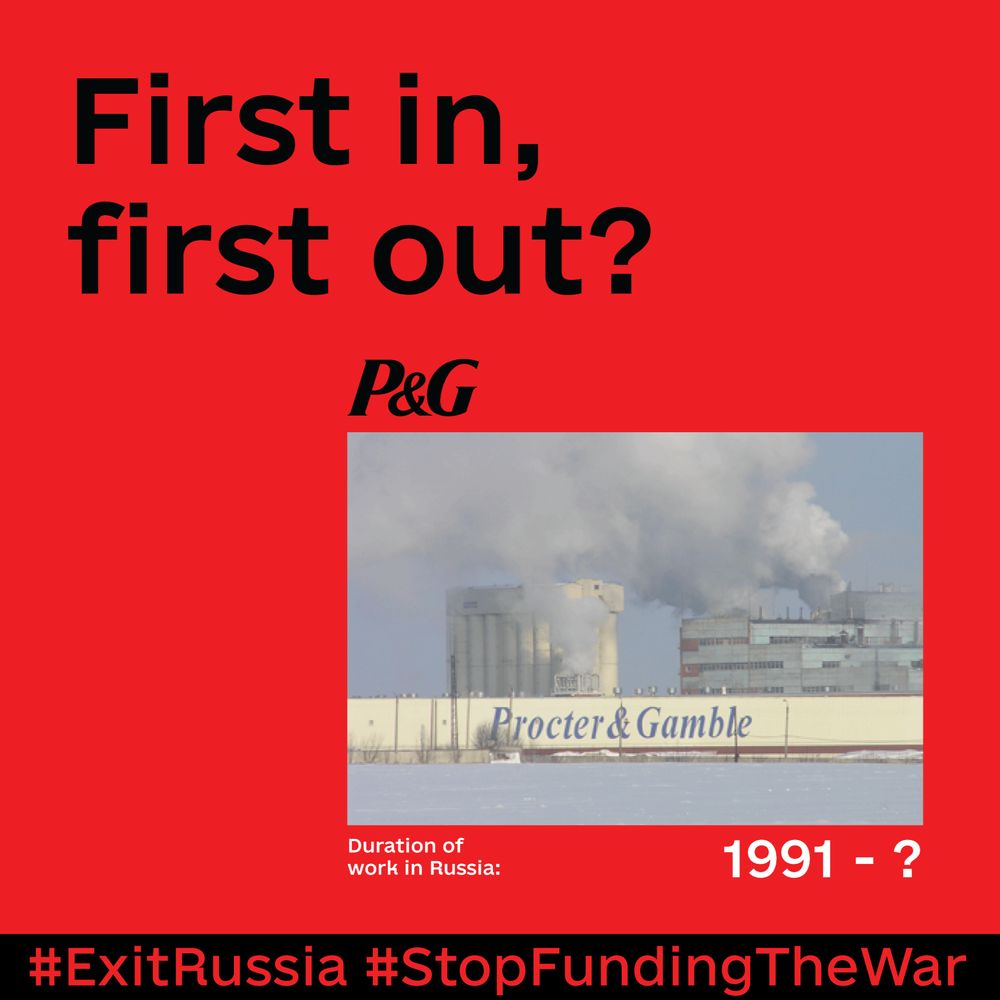
May 2022 has been quite a fruitful month when it comes to international companies completely withdrawing from Russia because of its unprovoked and unlawful war on Ukraine:Siemens, McDonald’s, Starbucks, M&S, Wella Company… Some of those pulling out have been working in Russia since the early 90-s, Soviet times, or even the prerevolutionary times of the Russian Empire. Their decisions to leave despite the decades-long history of operations in Russia highlight the point that many other companies still refuse to accept:one’s longevity of relations with Russia is not a good enough reason to keep operating there ignoring all its war crimes in Ukraine.
A long history of work in the Russian market is something multinationals used to brag about and build their brands on. The longevity of the relations with the country was regarded as a foundation for Russian customers’ loyalty. The longer, the better, they thought. But is it so?
Many companies prefer not to pay attention to Russian atrocities in Ukraine, using their long history in Russia as one of the excuses and simply engaging in self-deception. The recent months have proved that Russians are eager to replace western goods and services with the local ones. At the end of April 2022, in St. Petersburg, an installation appeared made up of one word: “ZAMESTIM” (“We will replace”). Each letter is the first letter of an international brand that has suspended operations in Russia. Z is for Zara. A is for Adidas. M means McDonald’s… Their company logos are featured, too. Most of these brands used to be among Russians’ favorite brands, but the ZAMESTIM campaign shows that there is no true loyalty in Russians’ hearts. This is solely a good enough reason to exit Russia, not even mentioning the growing cases of nationalization and Russians’ disregard for such intellectual property rights as brands.
Here are five major multinationals with a decades-long history of operations in Russia that share this opinion and act accordingly by completely withdrawing from the aggressor country. They set the example other companies must follow.
German industrial giant Siemens is leaving Russia after nearly 170 years since the company’s first contact in Russia (the Russian Empire then). In 1853, the Russian government awarded the company “Telegraphen-Bauanstalt von Siemens & Halske” a contract to build the Russian state telegraph network, with a total length of some 9,000 kilometers. To handle the project, the company opened a construction office in St. Petersburg. Since then and for decades, Russia was the second-largest market for the then Berlin-based company, and Siemens & Halske built a plant there expanding into electric lighting and energy transmission. For services to the Russian industry, Karl Siemens even received the nobility title.
Despite all the success in Russia, in 1916, the process of nationalization of all Siemens & Halske’s enterprises was launched, first by a tsar, then by Soviet commissars. That was a lesson to learn, but already in the 1920s, the company established new business contacts with the Soviet authorities and since then has supplied various equipment to the USSR and, once it collapsed, to Russia. However, given the lessons of the past, Siemens has not been betting big on Russia. Now, this market contributes only about 1% of the company’s annual revenue. Most of its business there involves service work on high-speed trains and is based on the company’s local plants.
At the start of Russia’s war in Ukraine in 2022, Siemens put all new business and international deliveries in Russia and Belarus on hold. On May 12, 2022, hit by sanctions, the German manufacturing giant said it will exit the Russian market entirely.
Société Générale came to Russia at the beginning of the 20th century. In 1901, the Group opened a subsidiary in St. Petersburg, Severnyy Bank. Nine years later, it was transformed into the Russian-Asian Bank. Through its subsidiary, the French banking group financed the construction of the first city tram lines in St. Petersburg and actively invested in various railway-related Russian enterprises.
But in 1917, the Group had to suspend its activities in Russia. It returned to the USSR in 1973, opening a representative office in Moscow. Later it established a subsidiary, Bank Société Générale Vostok, which became one of the first foreign banks in the Russian Federation after the collapse of the Soviet Union.
Russia’s war in Ukraine made the French banking group reconsider its decades-long presence in Russia. On May 18, 2022, Societe Generale completed the sale of Rosbank, which emerged as a result of the tie-up of Rosbank and Société Générale Vostok, and the Group’s Russian insurance subsidiaries to Interros Capital. It is the second exit in Société Générale’s history in Russia.
For the first time, German food manufacturer Dr. Oetker began selling its products in Russia at the beginning of the 20th century. But the first enterprise of Dr. Oetker appeared in Russia only in 1993 – a joint venture to produce muesli bars. Since then, it has been supplying Russians with frozen pizza, ingredients, and mixes for baking, instant desserts, and spice sets for home canning. For the last 19 years, the company has also owned a plant in Belgorod, which produced such products as yeast and baking powder for dough.
According to the German edition of Handelsblatt, Dr. Oetker was the first manufacturer that has completely left Russia. On April 8, 2022, the food manufacturer announced that it is selling its plant in Belgorod to its Russian management and exiting the Russian market completely.
Adidas has always been one of the most beloved brands for the Russian people who got acquainted with its sportswear in 1980 when the USSR hosted the Summer Olympics in Moscow. The event took place after the Soviet Union invaded Afghanistan, and back then Adidas was the only Western company that didn’t boycott the Olympics and fulfilled all its obligations as an official sponsor of the games. The company provided the entire Soviet Olympic team with sportswear.
The Soviet Adidas footwear was produced in Russia starting from 1979. Later the production lines were also launched in Tbilisi, Yerevan, and Kyiv. The first and only Adidas model produced in the USSR in those years was dark blue sneakers with three white stripes and a yellowish rubber sole. Even though in the West this model quickly became outdated, in the USSR it did not have an “expiration date” and became iconic for many generations.
In 2022, however, Adidas reacted to Russia’s invasion of another country in a much more decisive way. In just a little more than a week after the beginning of the war in Ukraine, the German sportswear company suspended its partnership with the Russian Football Union. On March 9, 2022, Adidas stopped accepting orders through the app and online shop, and on March 14, it closed all its retail stores in Russia. “As a company, we strongly condemn any form of violence and stand in solidarity with those calling for peace,” an Adidas spokeswoman then. Though there is a slight fly in the ointment: Adidas suspended its operations in Russia not for good but “until further notice”.
Two months after temporarily closing its 850 restaurants in Russia, McDonald’s has finally announced that it is entirely exiting Russia. The news about McDonald’s withdrawal marked the end of an era the same way as 32 years ago its arrival in Russia marked the upcoming collapse of the Soviet Union.
The magnitude of both events is difficult to underestimate. On January 31, 1990, McDonald’s served a record of 30,000 customers on a single opening day of its first restaurant. On March 13, 2022, the last day before 850 McDonald’s restaurants across Russia closed (temporarily as they said in March, for good as it turned out in May), thousands of Russians stood in not that long but still shockingly huge lines to have a farewell bite.
As part of McDonald’s recent decision to exit, the company is pursuing the sale of its entire portfolio of McDonald’s restaurants in Russia to a local buyer. The company intends to initiate the process of “de-Arching” those restaurants, which entails no longer using McDonald’s name, logo, branding, and menu. “We have a long history of establishing deep, local roots wherever the Arches shine”, McDonald’s President and CEO, Chris Kempczinski, said. “However, we have a commitment to our global community and must remain steadfast in our values. And our commitment to our values means that we can no longer keep the Arches shining there.”
Though pleasant precedents, these are hardly the rule. Here are the five companies that keep ignoring Russia’s war crimes in Ukraine using different excuses, including their long history of working in Russia.
Nestlé, the world’s largest food maker, supplied its products to Russia already at the end of the 19th century. In 1871, Henri Nestle signed an exclusive contract with the St. Petersburg merchant Alexander Wenzel for the supply of products to the Russian Empire. In the post-Soviet times, the company came back to Russia. In April 1995, Nestlé opened a representative office in Moscow. Also, today the company has six factories in six different Russian regions, and it is also building another one in the Novosibirsk region. Its factory in the Krasnodar region has been producing Nescafe instant coffee, the one in the Kaluga region – baby food, the one in the Perm region — Nesquik and other cereals. Altogether, Russia generated about 2% of the company’s total revenue last year.
When Russia launched a large-scale invasion of Ukraine, Nestlé first halted advertising and capital investments, then stopped shipments of non-essential products like Nespresso coffee capsules and San Pellegrino water. On March 23, 2022, the company said it was suspending most of its manufacturing in Russia. It stated that it is stopping the sale of brands like KitKat and Nesquik
However, the Swiss food maker keeps supplying other products. “As the war rages in Ukraine, our activities in Russia will focus on providing essential food, such as infant food and medical/hospital nutrition — not on making a profit,” Nestlé said in the statement without going into details about what it means by “essential”. Therefore, the company keeps paying taxes in Russia, if not a profit-related one, then a payroll-related one, and financing the deaths of Ukrainian parents and their children.
The history of Philips in Russia began in 1898, when Anton Philips, one of the founding brothers of the company, signed a contract for the supply of 50,000 bulbs to the Winter Palace (today the State Hermitage Museum; back at that time — the main residence of the Russian tsar). In 1914, Philips opened the first Russian office in St. Petersburg. Today, the company’s regional headquarters are in Moscow, and it operates in such markets as lighting, certain segments of healthcare, and consumer products.
In particular, since the mid-1990s Philips has been developing the production of medical equipment in Russia. For the last five years, Philips, together with Rentgenprom, has been producing ultrasound systems and CT scanners in the Moscow region. Also, Philips has an R&D unit based in the Skolkovo Innovation Center.
Currently, Philips refuses to exit Russia. “Russia itself has no industry for making medical equipment. The devices we supply serve, among other things, for care in cardiovascular diseases and for diagnosing cancer. We will, therefore, for humanitarian reasons, continue to supply that equipment,” a Philips spokesperson announced in March 2022. However, it is not only medical devices that are still available on Philips’s Russian online shop. There Russians still can buy a lighting bulb, a hairdryer, or a TV set.
The Raiffeisen Bank International (RBI) has been operating on the Russian market since 1989 when Raiffeisen Zentralbank of Austria, the “mother company” of the RBI, opened its representative office in Moscow. Then in post-Soviet times, RBI returned to Russia, opening its first office in Moscow. The Austrian banking group is one of the European banks most exposed to Russia. It heavily relies on Russia as it contributed almost a third to the group’s net profit in 2021.
Though since the start of the war in Ukraine, most of its foreign rivals, including Barclays, Rabobank, and Santander, have been withdrawing from Russia, so far RBI has stayed committed to doing business as usual in the aggressor country. “International banks that pursued a strategy of ‘let’s go into Russia too, because it seems like an interesting market’, but who never fully believed in the long term development of this market — they are the first to pull out,” Herbert Stepic, RBI chief executive, said in April 2022. “It’s very simple, the wheat is separating from the chaff …Either you are completely committed to Russia or not at all.”
Nevertheless, the potential exit might be eventually on the table for the Austrian lender. According to the investor presentation RBI made in early May, the banking group is assessing all strategic options for the future of its Raiffeisenbank Russia unit, “up to and including a carefully managed exit”.
Yves Rocher, French skincare, cosmetics, and perfume company, was founded in 1965, but it came to Russia only after the collapse of the USSR. The first boutique and salon opened its doors in Moscow on August 17, 1991, at a time of shortage of goods and empty shelves in stores everywhere. The queue filled the nearest streets, and the trading floor could not accommodate all the visitors. It expanded quickly, and by now has become the largest single-brand perfumery and cosmetics chain in the country, with 430 boutiques in over 170 cities.
Though publicly condemning the war, providing financial assistance to its Ukrainian employees and donations to support Ukraine, Yves Rocher refuses to pull out from Russia with its long history in Russia being the main argument: “Regarding our business activity in Russia, this situation particularly saddens us as we have a significant history in this country in which we have been present for over 30 years. For the moment we have decided to maintain our activity in Russia.”
American household goods maker Procter & Gamble Co became one of the first international companies to enter the Russian market after the fall of the Iron Curtain. The official representative office of P&G was opened in Moscow in 1991, and a few months later, a joint venture Procter & Gamble USSR was established. To launch its own production in Russia, later P&G bought a plant in Novomoskovsk, Tula region. The latter is still its largest plant in the country. It produces synthetic detergents, including the washing powders Tide and Ariel, Mr. Proper cleaning products, Comet cleaner, as well as Pampers. Also, the company has P&G Gillette in St. Petersburg. In the Russian retail market, the company is represented by 70 brands, including Gillette, Always, Pampers, Fairy, Ariel, Head & Shoulders, Oral-B, and others.
In response to the Russian war in Ukraine, in March 2022, P&G ended all advertising activities and new capital investments in Russia and reduced its portfolio to focus on basic hygiene, health, and personal care items. For a company that produces mainly household goods and hygiene and personal care products, it doesn’t imply a significant downscaling.
It seems that the screaming violation of human rights in Ukraine is not a good enough reason for P&G to pull out from Russia. On April 20, the company said in a securities filing that it may not be able to stay in business in Russia because of sanctions, restrictions on financial institutions, supply challenges, and monetary controls. No matter the reason for the potential exit, the company is still there — operating, selling, paying taxes, and, thus, financing Russia’s war on Ukraine and Ukrainians.
